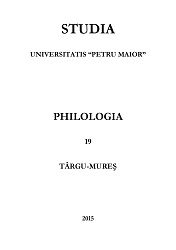The Metamorphosis of Imagination in Joseph Conrad’s Fictions
The Metamorphosis of Imagination in Joseph Conrad’s Fictions
Author(s): Mohsen Hanif, Tahereh RezaeiSubject(s): Fiction, Theory of Literature, British Literature, Sociology of Literature
Published by: Editura Arhipelag XXI
Keywords: Joseph Conrad; Imagination; reality;
Summary/Abstract: Imagination and concepts pertaining to it are at the core of Conrad’s fiction and theories. Conrad, in A Personal Record, asserts that the imaginative should grasp what is “all human” and based on “experience”. Nevertheless, he introduces various kinds of imaginations to his readers when it comes to fiction. For instance in Nostromo and Victory he respectively explains moral imagination and criminal imagination. The most outstanding point is that Conrad considers a very thin line between the “imaginative” and the “real”. In fact, he represents imagination as a faculty that helps people to predict future and stay alert. Typhoon, The Secret Agent, and Amy Foster best exemplify this idea. However, Conrad, as in Lord Jim, suggests that over-reliance on imagination might be dangerous. Moreover, he sometimes interweaves an aura of mystery around imagination, a view clearly noticeable in The Nigger of Narcissus. Conrad presumably is more outspoken about imagination and its nature in Youth. Therein, Conrad provides connections between imagination, youth, and sea. For him, while imagination impregnates the vigour of youth, it also embodies its ignorance and inexperience. Yet, it is impossible to draw a clear and constant picture of what Joseph Conrad meant by imagination.
Journal: Studia Universitatis Petru Maior. Philologia
- Issue Year: 2015
- Issue No: 19
- Page Range: 116-123
- Page Count: 8
- Language: English

